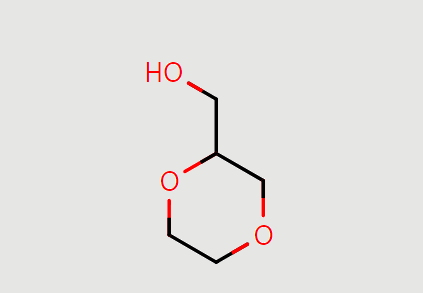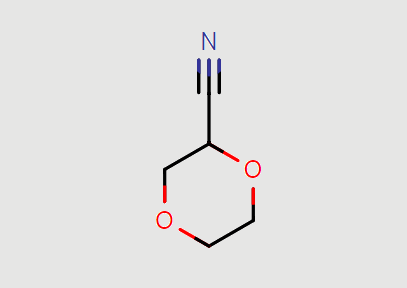Dioxane is used as a stabilizer for chlorinated solvents such as trichloroethane and trichloroethylene. It can also be an unintended contaminant of chemical ingredients used in consumer products including bubble bath, shampoo, laundry detergent, soap, skin cleanser, adhesives, and antifreeze. Foods may also contain small amounts of 1,4-dioxane from some additives and packaging materials.
The U.S. EPA has classified 1,4-dioxane as a likely human carcinogen. Low level exposure to 1 ,4-dioxane over a person's lifetime can increase the risk of cancer. Higher exposures over a shorter amount of time can damage cells in the liver, kidney, and respiratory system. This damage limits the ability of those organs to work properly.

1,4-dioxan-2-ylmethanol
Dioxane can get into your body mainly from consuming contaminated water, breathing contaminated air or vapors, and using contaminated cosmetic and/or cleaning products. As a byproduct of the ethoxylation process, a route to some ingredients found in cleansing and moisturizing products, dioxane can contaminate cosmetics and personal care products such as deodorants, perfumes, shampoos, toothpastes and mouthwashes.
Once it is in water, dioxane is likely to stay there and does not break down. This is why it can reach groundwater, surface water, and potentially drinking water. Once dioxane is in soil, it will most likely move into the water in the soil instead of attaching to the soil. If dioxane is released to air, it is likely to remain in air as a vapor.
Based on available laboratory studies, dioxane does not appear to be harmful to aquatic plants, fish, or other aquatic animals at levels currently found in the environment.

1,4-dioxane-2-carbonitrile
Reduce your use of products containing 1,4-dioxane. 1,4-Dioxane is not intentionally added to products, so it will not be listed on product labels. Some chemicals that may contain dioxane in small amounts that listed on product labels are:
PEG
Polyethylene
Polyethylene glycol
Polyoxythylene
Polyoxynolethylene
Chemenu offers a rapid, flexible, comprehensive and cost-effective chemical solutions to clients and institutions in the pharmaceutical industries. Our skilled and experienced team of organic chemists can perform complex, multi-step synthesis as well as proficient in solving challenging chemistry-related problem. Our CRO service includes two service models:
FTE (Full Time Equivalent):
Hit optimization
Hit-to-lead
Lead optimization
FFS (Fee For Service):
Building blocks, scaffolds or fragments
Leadlike or drug like compounds
Reference compounds
Potential API impurities
Metabolites

When the project enters into commercial needs, we can support manufacturing in LinkChem platform which has several plants to meet the capacity requirements. Contact us today !